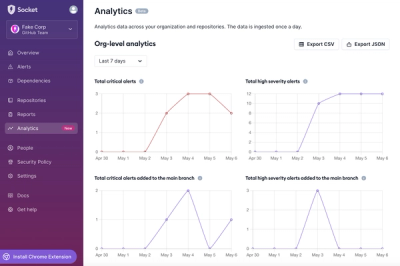django-sslify
Do you want to force HTTPs across your Django site? You're in the right place!
.. image:: https://img.shields.io/pypi/v/django-sslify.svg
:alt: django-sslify Release
:target: https://pypi.python.org/pypi/django-sslify
.. image:: https://img.shields.io/pypi/dm/django-sslify.svg
:alt: django-sslify Downloads
:target: https://pypi.python.org/pypi/django-sslify
.. image:: https://img.shields.io/travis/rdegges/django-sslify.svg
:alt: django-sslify Build
:target: https://travis-ci.org/rdegges/django-sslify
.. image:: https://github.com/rdegges/django-sslify/raw/master/assets/guardian-sketch.png
:alt: Guardian Sketch
Meta
Purpose
Enabling SSL on your Django site should be easy, easy as in one-line-of-code
easy. That's why I wrote django-sslify!
The goal of this project is to make it easy for people to force HTTPS on every
page of their Django site, API, web app, or whatever you're building. Securing
your site shouldn't be hard.
Installation
To install django-sslify, simply run:
.. code-block:: console
$ pip install django-sslify
This will install the latest version of the library automatically.
If you're using Heroku <https://www.heroku.com/>_, you should add
django-sslify>=0.2 to your requirements.txt file:
.. code-block:: console
$ echo 'django-sslify>=0.2.0' >> requirements.txt
Once you've done this, the next time you push your code to Heroku this library
will be installed for you automatically.
Usage
To use this library, and force SSL across your Django site, all you need to do
is modify your settings.py file, and prepend
sslify.middleware.SSLifyMiddleware to your MIDDLEWARE_CLASSES setting:
.. code-block:: python
# settings.py
MIDDLEWARE_CLASSES = (
'sslify.middleware.SSLifyMiddleware',
# ...
)
.. note::
Make sure sslify.middleware.SSLifyMiddleware is the first middleware
class listed, as this will ensure that if a user makes an insecure request
(over HTTP), they will be redirected to HTTPs before any actual
processing happens.
If you're using Heroku, you should also add the following settings to your
Django settings file:
.. code-block:: python
SECURE_PROXY_SSL_HEADER = ('HTTP_X_FORWARDED_PROTO', 'https')
This ensures that Django will be able to detect a secure connection properly.
Using a Custom SSL Port
If your site is running on a non-standard SSL port, you can change
django-sslify's default redirection behavior by setting a special variable
in your settings.py file:
.. code-block:: python
SSLIFY_PORT = 999
Disabling SSLify
If you'd like to disable SSLify in certain environments (for local development,
or running unit tests), the best way to do it is to modify your settings file
and add the following:
.. code-block:: python
SSLIFY_DISABLE = True
You can also disable SSLify for certain requests only (useful for exposing
HTTP-only web hook URLs, etc) by adding a callable with a single request
parameter to the SSLIFY_DISABLE_FOR_REQUEST list. Returning True from
your callable will disable SSL redirects.
.. code-block:: python
SSLIFY_DISABLE_FOR_REQUEST = [
lambda request: request.get_full_path().startswith('/no_ssl_please')
]
Notes
This code was initially taken from
this StackOverflow thread <http://stackoverflow.com/questions/8436666/how-to-make-python-on-heroku-https-only>_.
This code has been adopted over the years to work on Heroku, and non-Heroku
platforms.
If you're using Heroku, and have no idea how to setup SSL, read
this great article <https://devcenter.heroku.com/articles/ssl-endpoint>_
which talks about using the new SSL endpoint addon (which totally rocks!).
NGINX + Infinite Redirect
If you're running your Django app behind an Nginx load balancer, and are seeing
infinite redirects, the solution is to add the following line:
.. code-block:: text
proxy_set_header X-Forwarded-Proto $scheme;
To your nginx.conf file, inside of the relevant location blocks. This
Stack Overflow thread <http://stackoverflow.com/questions/23121800/nginx-redirect-loop-with-ssl>_
might also be useful.
Contributing
This project is only possible due to the amazing contributors who work on it!
If you'd like to improve this library, please send me a pull request! I'm happy
to review and merge pull requests.
The standard contribution workflow should look something like this:
- Fork this project on Github.
- Make some changes in the master branch (this project is simple, so no need to
complicate things).
- Send a pull request when ready.
Also, if you're making changes, please write tests for your changes -- this
project has a full test suite you can easily modify / test.
To run the test suite, you can use the following commands:
.. code-block:: console
$ cd django-sslify
$ python setup.py develop
$ python manage.py test sslify
Change Log
All library changes, in descending order.
Version 0.2.5
Released December 28, 2014.
- Adding in new
SSLIFY_DISABLE_FOR_REQUEST setting which allows a user to
specify functions that can choose to reject SSL -- this is useful for
situations where you might want to force SSL site-wide EXCEPT in a few
circumstances (webhooks that don't support SSL, for instance).
Version 0.2.4
Released on November 23, 2014.
- Adding the ability to specify a custom SSL port.
- Totally revamping docs.
- Changing project logo / mascot thingy ^^
- Adding new tests for custom SSL ports.



